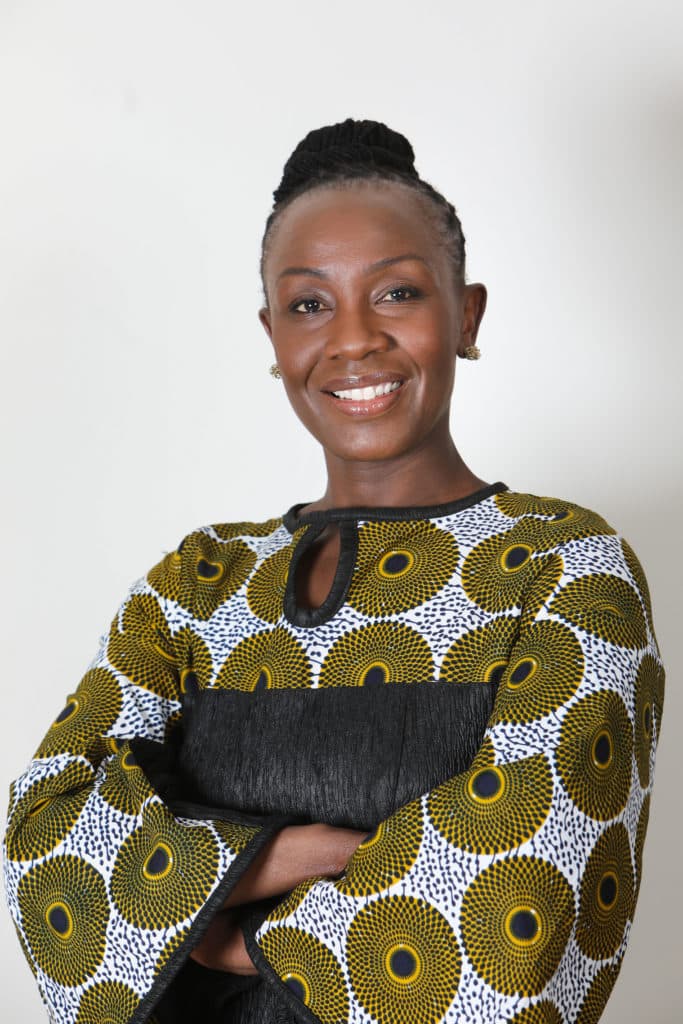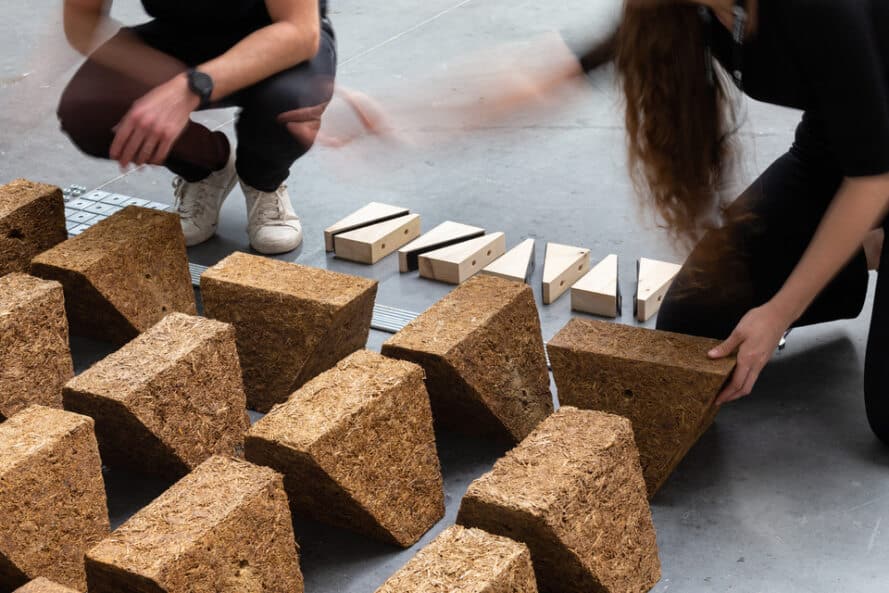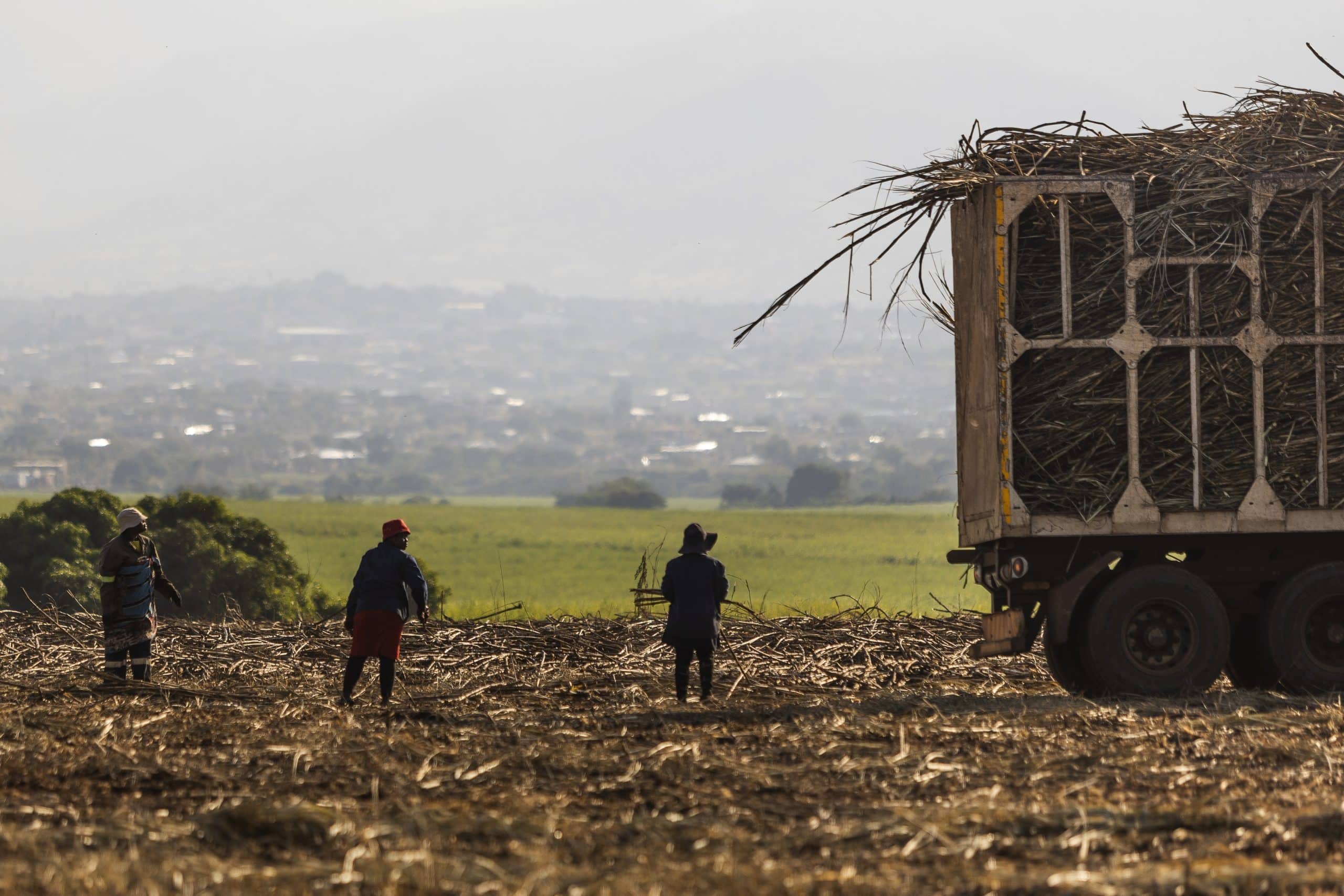Sprouting with possibilities but marred by uncertainties, South Africa’s sugar sector has seen rough patches over the past few years. But the industry has growth prospects and is pushing for sustainability and innovation.
From civil unrest and flooding along South Africa’s coast to load shedding and the macroeconomic politics at play, the country’s sugarcane farmers have experienced an increasingly turbulent period over the past several years.
For many, including sugarcane grower, Lindiwe ‘Lee’ Hlubi, or Mama Lee as she is known, the unrest in July 2021 that reportedly saw more than R50 billion (approximately $3.2 billion at the time of reporting) “wiped off the economy”, was especially difficult.
“With the weather that we’ve been having, my soils have really degraded. You’ll be surprised to know that I’m down to less than 1,000 tons of cane, because I was also affected by the looting [during the civil unrest]. Seventeen hectares of my cane were burned down to ashes. I had started with diversification – I had animals in my farm, but they killed my pigs because they tried to steal them,” she tells FORBES AFRICA.
“Then the following year – 2022 – we were hit by torrential rains. My farm was badly affected, roads were damaged, dams got damaged, so my infrastructure has literally been depleted.”
Loading...
After acquiring the farm – located in the town of Eshowe in KwaZulu-Natal (KZN) – in 2007, Hlubi says her start in sugarcane farming wasn’t the easiest as she had to commence many processes from scratch, processes which the previous farmer-owner had not followed, as well as purchase the necessary products and materials. She adds that this isn’t always the case, but it was for her.

“THE MORE WE DIVERSIFY OUR USES FOR THE ACTUAL CANE, THE MORE RESILIENT OUR INDUSTRY WILL BE.” —Linda Manda, Executive, Agribusiness, Corporate and Investment
Banking, Standard Bank
“You get into it as you go; as time progresses. But then the fact that you now need to take care of things like fertilizer, labor, chemicals, all your inputs, and replanting that needs to happen every year – you’re expected to do at least 10% of the farm, and then take it from there. That’s just the bulk of it,” she adds.
“That first year I walked in, there was cane – beautiful cane. It was lusciously green – about 4,800 tons of cane, which is the best that has ever been… But the following year, production started going down, because we were going through drought.” Hlubi’s is just one example of the complexities farmers face in the sector.
STATE OF SUGAR
According to the SA Canegrowers Annual Report 2022/2023, soaring input costs have made for a difficult operating environment in the sugar industry. The cost of fuels and lubricants has increased by 12%, fertilizers by 34% and irrigation by 45%. Furthermore, the average increase, combining all these inputs, was over 11%. This while increases in the price of sugar was limited to 7% over the term of the Sugarcane Value Chain Masterplan to 2030.
In addition to this, climate change and the milling crises regarding the entry of the Tongaat Hulett Limited and Gledhow Sugar Company mills into voluntary business rescue, have contributed to the tough times.
Dr Muhammad Kadwa, Industrial Affairs Manager at SA Canegrowers, explains, “Currently, we have the masterplan; we have protection in the form of import tariff. The main reason why the government supports us is because of the number of jobs that the South African sugar industry both directly and indirectly supports, with the majority being on the east coast of the country in KZN and Mpumalanga [provinces].”
“We are a resilient industry. We’ve faced a number of challenges in the last decade, I would say, from droughts, followed by the Health Promotion Levy or the sugar tax, followed by the civil unrest. Obviously Covid had a big impact, the floods of last year in KZN [and] the floods the beginning of this year in Mpumalanga.”
He says the industry is at a fragile time and hopes that the business rescue proceedings and potential appointment of an equity partner for Tongaat Hulett, where operations have continued uninterupted, would be successful. The company and Gledhow “together are four of the [14] sugar mills that currently exist in the industry”.
“The other aspect that we were faced with recently is obviously the significant increase in input costs, predominantly fertilizer and chemicals as a result of what’s happening in Ukraine,” adds Andy Church, Technology and Innovations Manager at SA Canegrowers.
“That has added financial pressure to the system over and above the issues around the business rescue, which has had a financial impact but, I think, also sort of a mental impact. It is quite a concern for those growers, not having certainty around the future of their mills. It’s safe to say that, hopefully, a solution will be found.”
The process is ongoing and, at the time of publishing, a decision had not yet been made regarding Tongaat Hulett.
In an industry that has seen domino after domino fall, creating a string of challenges, where do the possibilities for growth and innovation lie?
Sugar Blocks For Sustainable Construction

At the University of East London (UEL), in London in the United Kingdom, Alan Chandler and Bamdad Ayati relay the specifics of an innovative material called Sugarcrete to FORBES AFRICA.
In and of itself, it’s a solution to the carbon released when sugarcane waste, or bagasse, is burned to create fuels, like biofuel or ethanol. While it is still being tested and applied as a building material, Ayati gives us a practical breakdown of what it is and how it’s created.
“Sugarcrete is a biocomposite that can be used as a construction material. It’s composed of sugarcane bagasse, as a fiber, and also a mineral binder. So
Sugarcrete is a system which can accept diferent types of binder, depending on the construction application,” he explains. “We can design it to be load-bearing
for structural applications, but also we can make a low-density, high-fiber kind of formulation, so it can be used for non-load-bearing and more insulation
purposes. The whole idea is to sequester the carbon that has been absorbed in sugarcane, through photosynthesis, into a building product that can last for a lifetime of a building.”
Ayati adds that some of the binders that can be used actually mineralize the carbon, which helps with the sequestration and ensures that the carbon doesn’t decompose easily.
“We have a range of binders. You can mix sugarcane bagasse with lime-based binders and that gives you certain properties. It depends on application. If you’re in a very humid area and you want the walls to be breathable, we use lime,” he says. “However, with lime, it takes quite a long time to dry. For your blocks to dry very quickly, we came up with a two- component binder system which uses a silica base based on sodium silicate.” The project is a collaboration between the UEL and SRI, the latter comprising of Armor Gutiérrez Rivas, Senior Lecturer in Architecture, Chandler, SRI Co-Director and Ayati, SRI Research Fellow, and supported by cane sugar producer, Tate & Lyle Sugars.
Chandler maintains though, that youthful enthusiasm from the university’s students, coupled with the collaborators on the project, is what really brought the concept to life. Further to this, the team has opted not to patent the product so that it can be used in a way that benefits communities all over the world, including in the Global South.
“We could patent it. There is enough originality, particularly with some of the binding mechanisms that Bamdad’s genius has sort of cooked up, which are very original,” Chandler adds. “We just looked at it and thought – controlling this isn’t really the spirit of it. Because if you are coming up with stuf which is genuinely, locally useful and helpful, and all those other kind of positives, then why would you want to control it?”
According to the team, they’ve had enquiries about Sugarcrete from a range of markets, including India, Mexico, Brazil, Belize, Australia and an interested party in Chicago in the United States.
“We are advising a group in India; they said not to publicize [the name]. They are in the process of testing to build a small [school] building, a public building, and monitor the performance of it in their climate, which is a very particular climate. We’re in the process of helping them do that and they should be finished before the end of the year,” Chandler says.
“The principle is that we’re playing an advisory role to support particular projects. Policies in India are very interesting, because [Prime Minister] Narendra Modi is on the environmental case, and, you know, switching from petrol to ethanol, suddenly becomes national policy. Changing from cement blocks to Sugarcrete, could very quickly become policy, if it works. And our Indian partners know that.”
Chandler adds that the next step for the team, aside from testing the material in a real-world application, is looking at what other types of building materials can be created using this formula. No matter what it is, the focus will continually be “about deploying knowledge to make the best benefit for us on our planet”.
SUGAR AS JET FUEL?
As part of the sugarcane masterplan, measures are underway to explore the viability of sustainable aviation fuel as a value-add in the industry.
SA Canegrowers’ annual report further indicates that “the Sustainable Aviation Fuel (SAF) Project Steering Committee was formalized during the year under review and consultants appointed to attend to the di-ferent tasks as set out in the plan”.
“The industry, together with the IDC (Industrial Development Corporation), is funding a study at the moment, where we’ve looked at the markets. We are looking at the engineering, the technology, the environmental issues, and then the financials, and what needs to happen to go forward. So that’s quite well-advanced,” says Church.
“The aviation industry has kind of set themselves a target of being net zero by 2050. And fuel is one of the areas where they can lower the carbon footprint, amongst other initiatives that they are looking at. From a market perspective, we’re pretty confident that the product is there.”
“THE OTHER ASPECT THAT WE WERE FACED WITH RECENTLY IS OBVIOUSLY THE SIGNIFICANT INCREASE IN INPUT COSTS, PREDOMINANTLY FERTILIZER AND CHEMICALS AS A RESULT OF WHAT’S HAPPENING IN UKRAINE.” — Andy Church, Technology and Innovations
Manager, SA Canegrowers

He explains that currently, there is no regulatory framework in place but the idea is to convert export sugar into jet fuel.
“We did attend a workshop recently with the World Wildlife Fund and the Department of Transport, to start that whole process, to try and understand what regulatory framework is required,” Church explains.
“We’ve had initial engagements with the airlines around the ability of the industry to produce it. So a lot of it is going to hinge on that once the initial study is concluded, and we get an idea of the financial implications. That’s the key thing, what’s it going to cost us and are we going to be better o-f with that?”
Factors like sustainability, market requirements and technology itself have a role to play in the feasibility of the adoption of SAF but Church says that while this is work in progress, solutions have to be found.
“The technology around it is still quite new. So I wouldn’t say that’s a concern, but it is potentially a risk. It’s not just us, it’s everybody. All the airlines are looking at it. But nobody can put their hand on their heart to say, ‘well, this is how it’s going to roll out in the next 20 years’. They will tell you, ‘we actually don’t know how it’s going to be achieved’. But we have to do it,” he says.
“The European Union, for example, has kind of ruled out any sustainable aviation fuel that comes from crops so, e-fectively, that rules sugarcane out. But it doesn’t preclude the individual airlines that want to go over and above the minimum regulations around the blending rate. There’s nothing stopping Air France or KLM or Lufthansa actually approaching us to procure the fuel. The market study has been quite interesting, just understanding the di-ferent regions and what their approaches are. But it’s looking pretty positive at this stage.”
The findings of the study are expected in the fourth quarter of this year.
DRONE-SPRAYING TO IMPROVE RIPENING
In the September 2023 edition of the South African Sugarcane Research Institute’s (SASRI) The Link newsletter, the institution explores the usefulness of chemical ripeners to improve low cane quality at certain times, during the milling season. This is done through the manipulation of plant growth processes.
These ripeners are applied by air over the sugarcane fields and was previously used for large-scale as opposed to small-scale growers (SSGs) due to the size of the fields and fragmented land use. However, the reportedly recent availability of spraying drones has made this technology more accessible to SSGs.
“The South African Sugarcane Research Institute is continuously seeking innovative ways to improve sugarcane farming, thereby ensuring better yield for cane growers,” says South African Sugar Association (SASA) Executive Director, Trix Trikam.
He adds that the chemical ripening of cane “has delivered positive outcomes for small-scale farmers, who constitute the majority of growers in the industry”.
Drone ripening demonstration trials were recently established in 11 SSG regions in the Mpumalanga and KZN provinces in South Africa.
According to SASRI, the economic benefits of ripening were in the range of R1,238 ($66) to R9,116 ($487) per hectare. These were from “in-field estimates of the cane yield and quality from monitoring points in the ripened and untreated parts of each demonstration trial field, both before spraying and again before harvest, as well as commercial harvest data, where available”.
Dr Riekert van Heerden, Programme Manager: Crop Performance & Management at SASRI, adds, “At present, it is not easy for SSGs to gain access to drone spraying services because of limited drone hardware and operator availability.”
“A solution could be the establishment of drone-spraying services within the SSG communities. Investment would be required for the purchasing of drones and the training and licencing of drone pilots that could then provide these services to SSGs as contractors.”
SUSTAINABILITY AND SURVIVAL
There are an estimated 20,711 small-scale growers in South Africa and 1,126 large-scale growers. SASA has also said that based on revenue generated through sugar sales in the Southern African Customs Union (SACU) region and world market exports, the South African sugar industry generates an annual estimated average direct income of R14 billion ($746 million), which constitutes R5.1 billion (approximately $271 million) in value of sugarcane production in the country.
However, growers are only one aspect of this industry.
“There’s a lot of interest in South Africa’s sugar industry. If we’re talking about sugar specifically, about 80% of sugarcane is supplied by large-scale farmers, with the remaining 20% being emerging farmers. In terms of Mpumalanga and KZN, it is really the strategic crop in those regions,” says Linda Manda, Executive, Agribusiness, Corporate and Investment Banking at Standard Bank.“When we’re talking about the sugar sector, we need to also remember that it’s a whole chain, right? It’s the input providers, the growers, the transporters, the millers, the industry bodies. It’s the regulator. It is then other value addition constructs that are attached to the sector, such as confectionaries, bakers, as well as drinks manufacturers that rely on sugar. It’s a much larger industry than people would look at from a face value perspective.”
Manda adds that while current energy and infrastructure challenges in the industry do need to be tackled, South Africa can no longer afford to “carry the inefficiencies”.
“Some benefits have come out of the sugar masterplan, such as encouraging local buying, so that the demand and our local industry is much stronger and much more robust.”
Manda also says that the necessary investments need to start flowing, and for the industry to survive, sustainability is key.
“At this moment in time, a lot of the sugarcane produces sugar, which goes into food, I can say, so actually, the sugar that goes on your plate, and then the sugar that goes into like drinks and so forth. But there are many other uses for sugar, and the more we diversify our uses for the actual cane, the more resilient our industry will be,” she says.
“Cane doesn’t only produce sugar; from cane, you can produce ethanol. If we had a conducive environment that allowed the millers to competitively produce ethanol – there is research at the moment that’s going into aviation. Other products are bagasse, which can be used to produce bio energy and can be used to fire up plants and produce energy that can be sold back into the grid, if necessary. The more we are encouraged to explore and exploit these opportunities, the more competitive the South African sugar industry will be.”
Loading...
